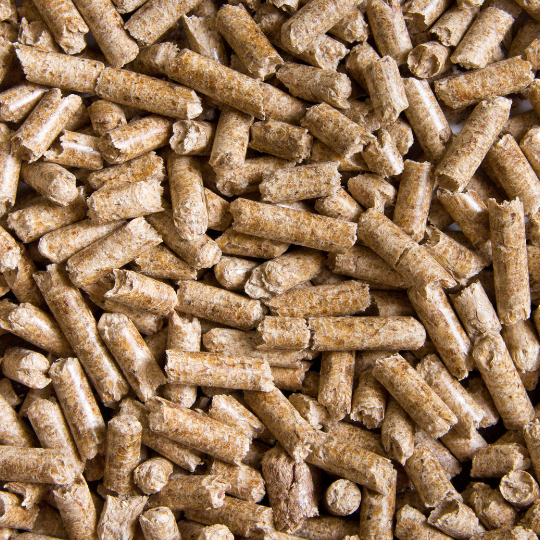Finding reliable wood pellet fuel near me can be a game-changer for your heating needs. This eco-friendly option not only provides warmth but also supports sustainable living. With the rising demand for renewable energy sources, knowing where to source quality pellets is essential. Local suppliers offer convenience and often better prices. In this post, we’ll explore the benefits of hardwood pellets, how to choose the right supplier like maxiheat pellets, and tips for maximising efficiency. Get ready to transform your heating experience while being kind to the planet.

Finding Wood Pellet Suppliers
Local Retailers and Stores
Many local retailers stock wood pellets. Stores like Bunnings offer NSFP hardwood pellets. Their inventory can vary, so checking regularly is wise. Some smaller garden centres also sell value wood pellets. Visit these places to see what they have available.
Online Purchase Options
Buying wood pellets online has become popular. Websites often provide a wider range of options. You can compare pellet prices easily. Some suppliers offer free delivery for larger orders. This method saves time and effort, especially if you need several bags.
Bulk Delivery Services
Bulk delivery services are available for those needing large quantities. Many companies will deliver directly to your home. This option usually provides better rates on pellet supply. It’s ideal for those who use wood pellets regularly, as it reduces trips to the store.
Checking Availability Near You
Confirming pellet availability in your area is essential. Use online tools or call local suppliers for stock updates. Social media groups can also provide valuable information about where to find wood pellets nearby. Local community boards may list suppliers too.

Benefits of Wood Pellet Fuel
Environmental Advantages
Wood pellet fuel offers significant environmental benefits. It is made from compressed sawdust and wood shavings, which helps reduce waste. This process uses materials that would otherwise go to landfills. Burning wood pellets produces lower carbon emissions compared to fossil fuels. They are considered a renewable energy source, as trees can be replanted.
Using wood pellets also supports sustainable forestry practices. Many suppliers ensure that their wood comes from responsibly managed forests. This approach helps maintain biodiversity and protects ecosystems.
Cost-Effectiveness
Wood pellet fuel is often more cost-effective than traditional heating methods. Prices for wood pellets tend to be stable, unlike oil or gas prices, which fluctuate widely. Homeowners can save money on heating bills by switching to maxiheat pellets, pellet fires.
Many regions offer incentives for using renewable energy sources. These incentives can further reduce the overall cost of heating with wood pellets.
Efficiency and Performance
Wood pellets burn efficiently and produce a high heat output. They have a low moisture content, which allows for cleaner combustion. This efficiency means less ash and fewer emissions compared to other fuels.
Many modern pellet stoves and boilers are designed for optimal performance. They provide consistent heat and require minimal maintenance. Users appreciate the convenience of automatic feeding systems that simplify operation.
Understanding Wood Pellet Production
How Pellets Are Made
Wood pellets are produced by compressing dried wood fibres. The process begins with raw materials like sawdust or wood shavings. These materials undergo drying to reduce moisture content. After drying, they are ground into fine particles.
Next, the fine particles are subjected to high pressure in a pellet mill. This pressure causes the lignin in the wood to melt, binding the particles together into small, dense pellets. The pellets are then cooled and packaged for distribution.
Current Supply Situation
The supply of wood pellet fuel has seen fluctuations in recent years. In 2021, the global demand surged due to increased interest in renewable energy sources. Many countries have invested in wood pellet production facilities. This investment aims to meet both local and international demands.
However, supply chain disruptions from the COVID-19 pandemic affected production rates. As a result, some regions experienced shortages.
Factors Affecting Pricing
Several factors impact the pricing of wood pellets. Availability of raw materials plays a crucial role. Seasonal changes can affect timber supplies, leading to price variations.
Transport costs also influence prices significantly. Increased fuel prices can raise shipping costs, affecting overall pellet prices. Competition in the market can drive prices up or down depending on demand levels.

Using Wood Pellet Fuel
Applications and Uses
Wood pellets serve various purposes. They are primarily used for pellet heating in residential and commercial settings. Many homeowners choose pellet heaters for their efficiency. These units burn wood pellets, providing heat for large houses or smaller spaces alike.
Pellet fires create a consistent warmth while being environmentally friendly. They produce less ash than traditional wood fires. This makes cleanup easier and reduces waste. Some people use hardwood pellets for cooking in pellet grills and smokers, enhancing the flavour of food.
Comparing to Other Fuels
Pellet fuel has advantages over other heating options. Compared to oil or gas, wood pellets are often more affordable. The local pellet fuel market typically offers competitive prices. Wood pellets also have lower emissions, making them a greener choice.
However, there are challenges. Pellet fuel shortages can occur during high demand seasons. This may lead to price increases or difficulty in finding specific pellet brands like maxiheat pellets. Softwood pellets tend to ignite quicker but burn faster than hardwood varieties. Each type has its strengths and weaknesses depending on usage patterns.
Storage and Handling Tips
Proper storage is essential for wood pellets. Keep them in a dry area to prevent moisture absorption. Moisture can affect burning efficiency and lead to clumping. Use airtight containers for long-term storage if possible.
Handling pellets requires care as well. Always lift bags using your legs to avoid strain. When purchasing, inspect bags for damage or signs of moisture before buying.

Final Remarks
Choosing wood pellet fuel is a smart move for your heating needs. You’ve explored how to find local suppliers, the benefits of using this eco-friendly option, and how it’s made. Armed with this knowledge, you can make an informed decision that supports sustainability while keeping your home warm.
Now, it’s time to take action. Search for wood pellet fuel near me to find reputable suppliers in your area and consider making the switch. Your choice can lead to savings and a greener planet. Don’t wait—start your journey towards efficient heating today!
Frequently Asked Questions
How can I locate wood pellet fuel near me?
You can locate wood pellet suppliers through online searches, local directories, or by visiting home improvement stores. Websites like Yelp or Google Maps can provide reviews and contact information for nearby suppliers.
What are the benefits of using wood pellet fuel?
Wood pellet fuel offers efficient heating, lower emissions, and is made from renewable resources. It also burns cleaner than traditional fuels, providing a more environmentally friendly option for your heating needs.
How are wood pellets produced?
Wood pellets are made from compressed sawdust and wood shavings. The production process involves drying the raw materials, grinding them into a fine powder, and then extruding them under high pressure to form pellets.
Can I use wood pellets in my existing fireplace?
Yes, you can use wood pellets in some fireplaces with a compatible insert or stove designed for pellet burning. Ensure your setup meets safety standards and check manufacturer guidelines before use.
Are wood pellets cost-effective compared to other fuels?
Yes, wood pellets can be more cost-effective than oil or propane. Their higher energy density means you get more heat per unit, potentially lowering your overall heating costs.
How should I store wood pellets?
Store wood pellets in a dry, well-ventilated area to prevent moisture absorption. Avoid direct ground contact and consider using a waterproof cover if storing outside.
Do wood pellets produce ash?
Yes, burning wood pellets will produce some ash, but it is significantly less than traditional firewood. Regular cleaning of your stove or fireplace will ensure optimal performance and efficiency.
In conclusion, if you are eager to delve deeper into the details of coir products, feel free to explore our website at www.bertwin.com.au. Additionally, for direct and instant connection with our team, you can reach us through the following WhatsApp link here. We look forward to providing you with the information and assistance you need.
